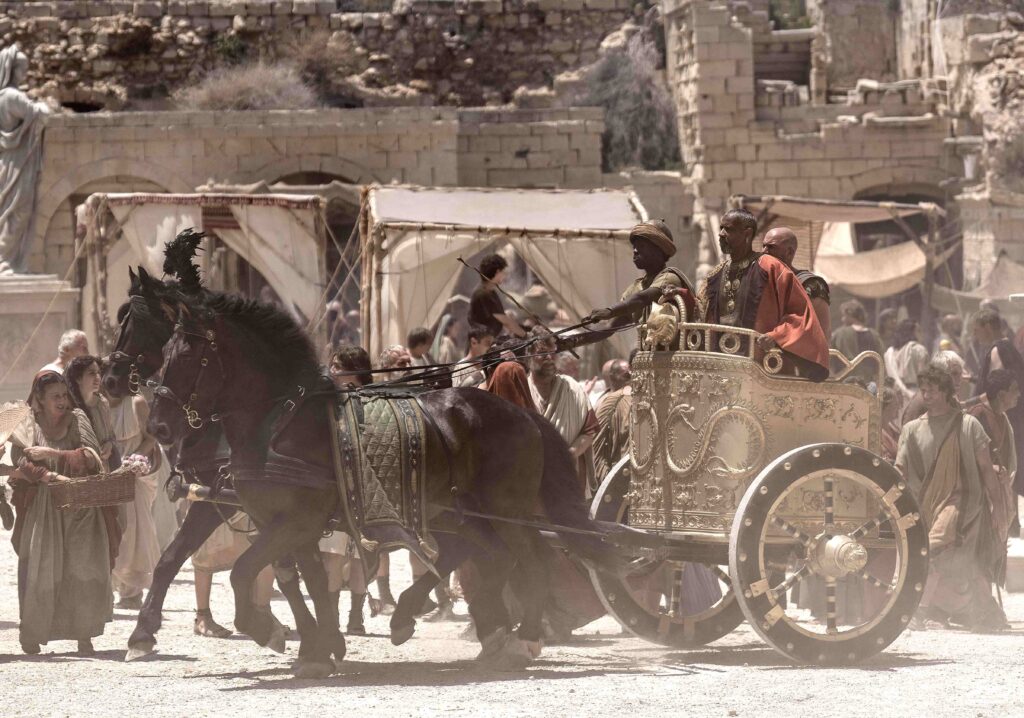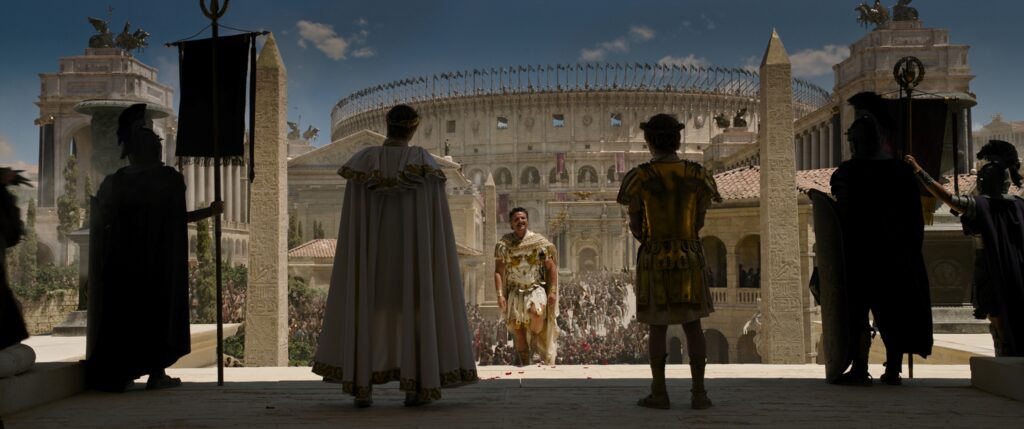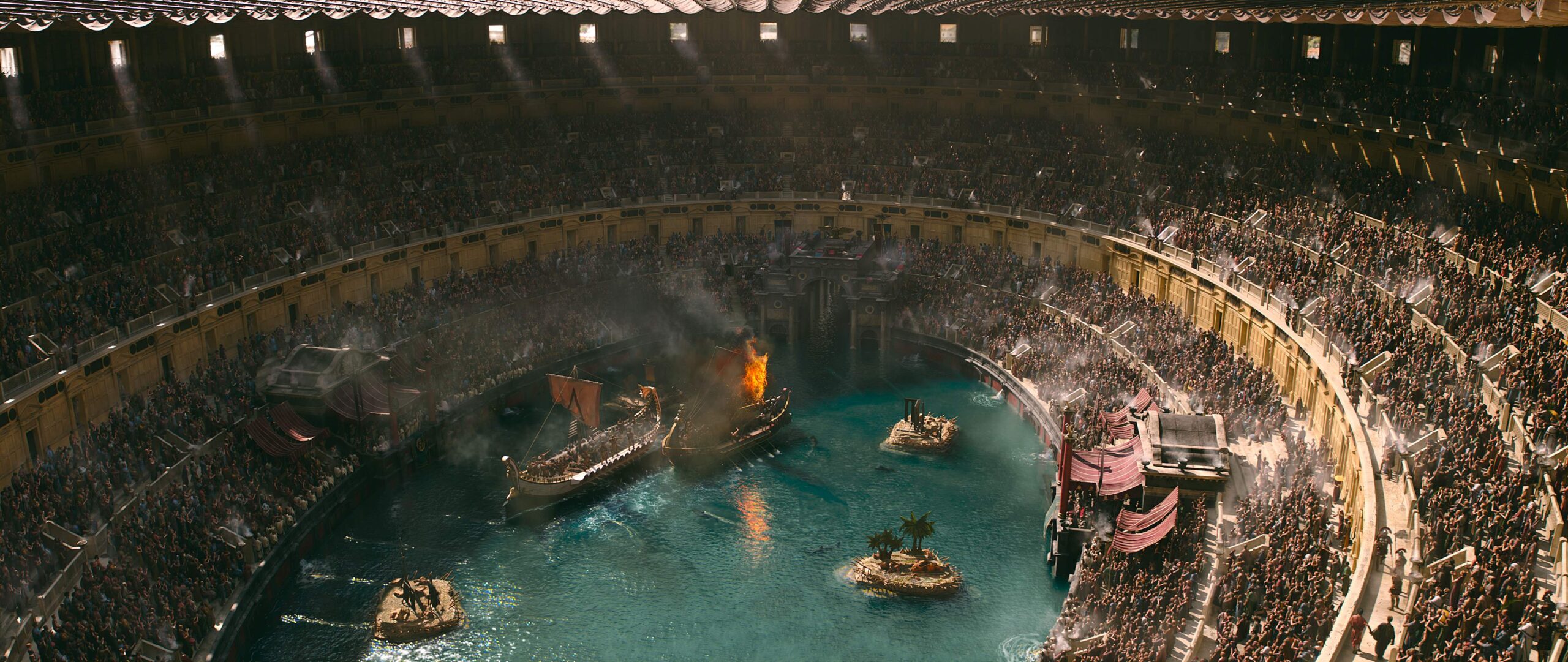Gladiator II is the most ambitious collaboration director Ridley Scott has done with production designer Arthur Max. The acclaimed filmmaker has often turned to Max to help build his creative vision. This is the 16th project Scott and Max have worked on together, a list that includes Gladiator, American Gangster, The Martian and Napoleon.
“Everything is much bigger and more elaborate than anything we’ve done before,” says Max, who oversaw the design and build of ancient Rome for the movie. “It’s Gladiator on steroids. Ridley’s approach to making a film is always immersive. He’s involved in every phase, every department. It can be a challenge working with him, because he expects so much. And I love a challenge.”
The long-awaited sequel was filmed in Morocco and Malta, with a few scenes at Shepperton Studios outside London. “It would be hard to overstate how massive a production Gladiator II was,” says producer Lucy Fisher. “The scope was overwhelming. In Morocco, there were over 80-something huge tents dedicated just for the extras’ hair and makeup, and to house countless props and costumes. In Malta, we assembled the Arena, the palace and whole blocks of ancient Rome. There was a life size statue of Pedro Pascal on his horse. In a world of green screen and AI, this might be the last great build in movies. And we all felt privileged as we walked the streets of this lost world.”

The set recreates many of Rome’s impressive historical settings in an area approximately eight kilometers long. Max created an even larger replica of the Colosseum, and a considerably grander city entry arch adorned with Romulus and Remus motifs. His plans combined cutting-edge technology with ancient craftsmanship on a breathtaking level. “We used many of the same old-school techniques for architectural recreations, sculptures, frescoes and painting, to create authenticity and intimacy. But there are a lot of digital tools now we didn’t have access to then. When Ridley told me to go for scale on this one, I took that to mean, bigger than before – and it was all very big to start with.”
The Colosseum set was a practical build of roughly one third the correct height of the real Colosseum, and somewhere between a quarter to a third of the span. “We knew we had to fill it with water,” says Max. “So we raised the foundation up about five feet so we could still see what we wanted above the water line when we flooded it digitally. We also enlarged the entry arch, so we could bring the ships in through the gates. We gave it a little bit of a boost from the bottom up, but you will recognize it when you watch the film.”

More than 500 extras were brought in to play the Romans who crowded the Colosseum, but it was nowhere near enough people to fill up even the scaled-down amphitheater, so many more spectators were added digitally. Scott, who is known for using up to four cameras at a time, regularly used eight to 12 for this shoot, plus additional drones and crash cams. Each scene, he says, is directed like a play, with simultaneous action taking place all over the set. “You have to know exactly where to place the cameras,” explains the director. “I can do that because I’ve storyboarded it all in advance. For even the best camera operator it can be hell. I don’t rehearse with the actors, but I do rehearse with the camera operators, and I dress them in costume on the set because they could end up in a scene.”

Leave a Reply